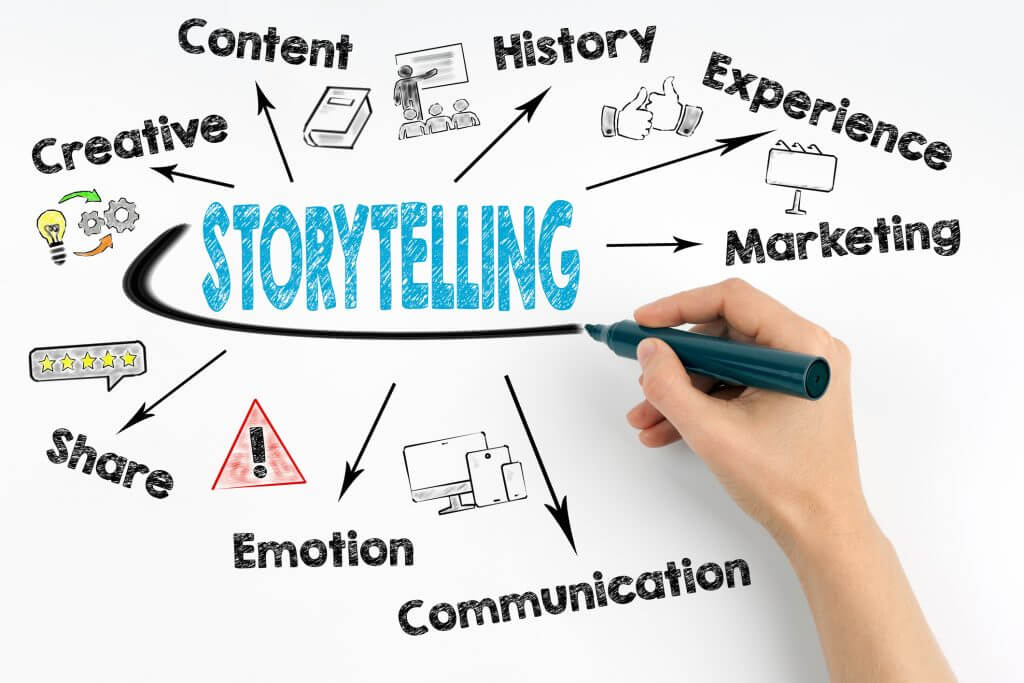- Have any questions?
- +91 96020 93137
- info@worldseoservices.com
The Role of Storytelling in Branding: How to Craft an Authentic Narrative

How to Build a Memorable Brand: Key Elements of Branding
December 28, 2024
Personal Branding 101: Establishing Your Unique Digital Footprint
December 28, 2024Share tips for creating a brand story that resonates emotionally with the target audience.
In the crowded world of modern marketing, a compelling story can be the key to making your brand stand out. Storytelling is not just a tool for communication; it’s a bridge that connects your brand with its audience on an emotional level. At World SEO Services, we believe that the Role of Storytelling in Branding cannot be overstated. Crafting an authentic narrative allows your brand to resonate with its audience, build trust, and create a memorable identity.

Why Storytelling Matters in Branding
Storytelling is at the heart of human connection. People are naturally drawn to narratives that evoke emotions, inspire action, and convey meaning. When used effectively, storytelling can:
- Forge Emotional Connections: Stories evoke emotions, helping audiences relate to your brand on a personal level.
- Enhance Brand Recall: A compelling narrative makes your brand more memorable.
- Build Trust and Credibility: Authentic stories demonstrate transparency and foster trust.
- Differentiate Your Brand: A unique story sets your brand apart from competitors.
In short, storytelling transforms a business into a relatable entity, one that customers are more likely to support and recommend.
Elements of Effective Storytelling in Branding
To craft a narrative that resonates, you need to focus on certain key elements:
1. A Clear Brand Purpose
Every story starts with a purpose. Why does your brand exist? What mission does it aim to achieve?
Example:
TOMS Shoes tells a story of giving back: for every pair of shoes purchased, another pair is donated to someone in need.
Action Step:
Define your brand’s purpose and ensure it’s woven into every aspect of your narrative.
2. Authenticity is Key
Consumers today value honesty and transparency. A story that feels forced or disingenuous can harm your brand’s reputation.
Example:
Patagonia’s commitment to environmental sustainability is deeply embedded in its story, making it both authentic and inspiring.
Action Step:
Stay true to your brand values and share real stories about your journey, challenges, and successes.
3. Understand Your Audience
A story resonates only if it speaks to its audience. Understanding who your customers are and what they care about is crucial.
Example:
Airbnb’s marketing campaigns often feature stories from real users, creating a sense of belonging that appeals to travelers.
Action Step:
Conduct audience research to identify their needs, preferences, and aspirations. Tailor your narrative to align with these insights.
4. Create a Relatable Hero
Every great story has a hero, and in branding, this hero is often your customer. Position your brand as the guide that helps them overcome challenges or achieve their goals.
Example:
Nike’s “Just Do It” campaigns position athletes as the heroes, while the brand provides the tools and inspiration for their success.
Action Step:
Frame your story around your customers’ journey, highlighting how your brand plays a pivotal role in their lives.
5. Evoke Emotion
Emotions drive decisions. Whether it’s joy, nostalgia, or inspiration, a story that stirs feelings is more likely to be remembered.
Example:
Coca-Cola’s holiday campaigns often focus on themes of happiness and togetherness, reinforcing its brand message.
Action Step:
Use visuals, words, and themes that evoke emotions aligned with your brand’s identity.

How to Craft an Authentic Narrative
Crafting a powerful brand story requires careful planning and execution. Here’s a step-by-step guide:
1. Start with Your Origins
Every brand has a unique journey. Sharing your origin story adds a personal touch and makes your brand relatable.
Example:
Apple’s story of humble beginnings in a garage emphasizes innovation and perseverance.
Action Step:
Highlight key moments in your brand’s history that reflect its values and mission.
2. Focus on Values and Vision
Your story should reflect what your brand stands for and where it’s headed.
Example:
Ben & Jerry’s incorporates social justice issues into its brand narrative, showcasing its values.
Action Step:
Articulate your brand’s core values and integrate them into your storytelling.
3. Showcase Real Experiences
Nothing speaks louder than real-life examples. Share testimonials, case studies, or user-generated content to make your story more credible.
Example:
Dove’s “Real Beauty” campaign features real women, celebrating diversity and authenticity.
Action Step:
Encourage customers to share their experiences with your brand and feature them in your narrative.
4. Use Multiple Formats
A story doesn’t have to be told through words alone. Visuals, videos, and interactive content can make your narrative more engaging.
Example:
Red Bull uses high-energy videos to tell its story of adventure and thrill-seeking.
Action Step:
Leverage different content formats, such as infographics, short films, or podcasts, to tell your story creatively.
5. Maintain Consistency
Consistency across all platforms reinforces your story and ensures it stays top-of-mind.
Example:
Disney’s branding, from movies to theme parks, consistently reflects its magical storytelling.
Action Step:
Ensure your story is aligned across all touchpoints, from social media to packaging.

The Role of Storytelling in Digital Branding
In the digital age, storytelling has found new platforms and audiences. Social media, blogs, and email campaigns provide opportunities to share your narrative and engage directly with your audience.
Tips for Digital Storytelling:
- Use short, compelling stories for platforms like Instagram and TikTok.
- Create long-form content for blogs or YouTube that dives deeper into your brand story.
- Engage with your audience through interactive elements like polls or live Q&A sessions.


